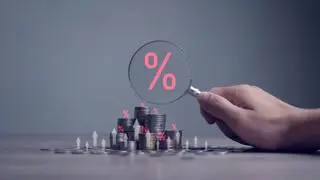Economists are renowned for getting their forecasts wrong. Only in April, the IMF had that predicted India will grow at a rate of 7.2 per cent in FY20, but recent data indicates a falling GDP growth (4.5 per cent). The IMF particularly spoke of the “slow growth in rural incomes, domestic demand (as reflected in a sharp drop in sales of automobiles) and credit from non-banking financial companies (NBFCs)” as plausible causes. But not all of this is apparent from data — the growth in household consumption at 5 per cent was actually higher than that of the previous quarter, although lower than its secular average. But it is not low enough to explain the much hyped demand slowdown in many sectors.
Government spending (the usual panacea for growth) jumped nearly 12 per cent and propped up a falling GDP, but could not compensate for the fall in private investment. The decline in bank credit also cannot completely explain the demand slowdown. As per RBI data, over 60 per cent of commercial banks’ retail lending was for housing and education, not consumption spending; with regard to NBFCs, where this perception is stronger, only less than half of all their retail lending was for automobile financing.
Structural issues
To be sure, banks have shied away from financing large corporate projects, but whether this was due to risk aversion or the lack of new investment demand is a moot question. The steep fall in manufacturing and construction, and stagnant private investment — which led to the fall in GDP — still need explaining. Given the complex problems that plague many sectors, separating demand and supply factors will be a difficult exercise.
For instance, the power sector is in an existential crisis (non-honouring of PPAs, non-payment of dues, falling tariffs, etc) which has led to the scaling down or even closure of many power plants, a fact that could explain the fall in power generation in the IIP as well as declining manufacturing demand. Likewise, the stagnation in private investment, even after reduction in interest rates and tax rates, points to issues beyond demand — these could be due to excess capacities created in the past, a preference for short-term profit or a simple lack of will.
The belief that the slowdown is demand-driven, and therefore cyclical, seems based on hope. The play of structural factors cannot be ignored. First, the fact that private household consumption drives the economy (over 50 per cent of the GDP), can be misleading. The fact is, we are still a low-middle income country with a per capita GDP of around $2,000, and nearly 80 per cent of our consumption expenditure consists of spending on essentials.
We do not know much about consumption inequality, but there is a high level of income inequality. According to the World Inequality Report 2018 , the top 10 per cent of India’s population got 54 per cent of all income while the bottom 50 per cent shared only 15 per cent. A skew such as this can impact demand in sectors like automobiles or consumer goods.
Employment pattern
The other structural problem relates to employment. Our labour markets have many growth-impeding rigidities — a low labour force participation ratio (which means a large section of working-age population, mainly women, choose not to work); a high percentage (over 70 per cent) of rural labour ostensibly engaged in agriculture, but adding little to productivity or income; and a large informal work structure, where reportedly about 46 per cent people are self-employed and 20 per cent casually employed, making income estimation little more than guesswork for two-thirds of the labour force.
The sectoral Gross Value Added (GVA) data as well as income tax data reinforce these facts. A large GVA signifies a higher share of wage incomes and capital surpluses. Thus, while agriculture had high value addition (78 per cent), its share in the national income was small because of the large labour force working at low or zero wages. In contrast, the services sector contributes over 50 per cent of the GDP and also has high value addition, but employs a far lesser proportion of labour (about 25 per cent). The combination of low per capita GDP and high income skew has, not surprisingly, led to a low tax-GDP ratio.
The newly-minted economics Nobel laureates have eloquently described why it is difficult to explain economic growth, much less policies that will lead to equitable growth. But they also point to the existence of inefficiencies and misallocations that present actionable opportunities for governments.
Getting to a $5-trillion GDP may help us cross over to upper-middle income status, but unless the growth is equitable and broad-based, the economy will be continue to be susceptible to gyrations of the kind witnessed now.
The writer is an independent financial consultant








Comments
Comments have to be in English, and in full sentences. They cannot be abusive or personal. Please abide by our community guidelines for posting your comments.
We have migrated to a new commenting platform. If you are already a registered user of TheHindu Businessline and logged in, you may continue to engage with our articles. If you do not have an account please register and login to post comments. Users can access their older comments by logging into their accounts on Vuukle.